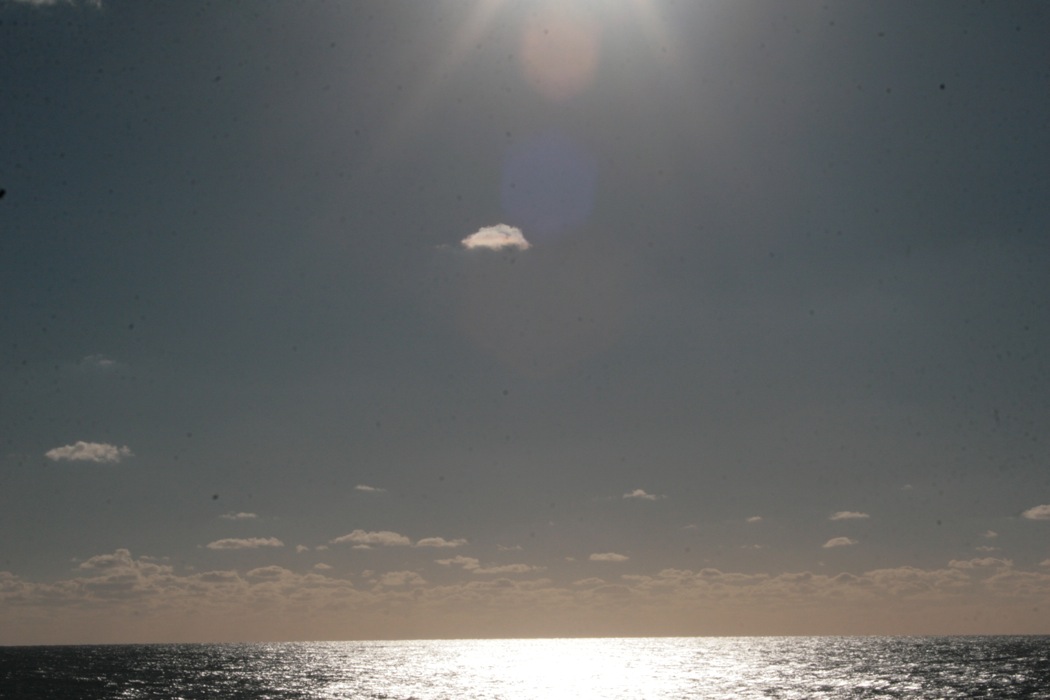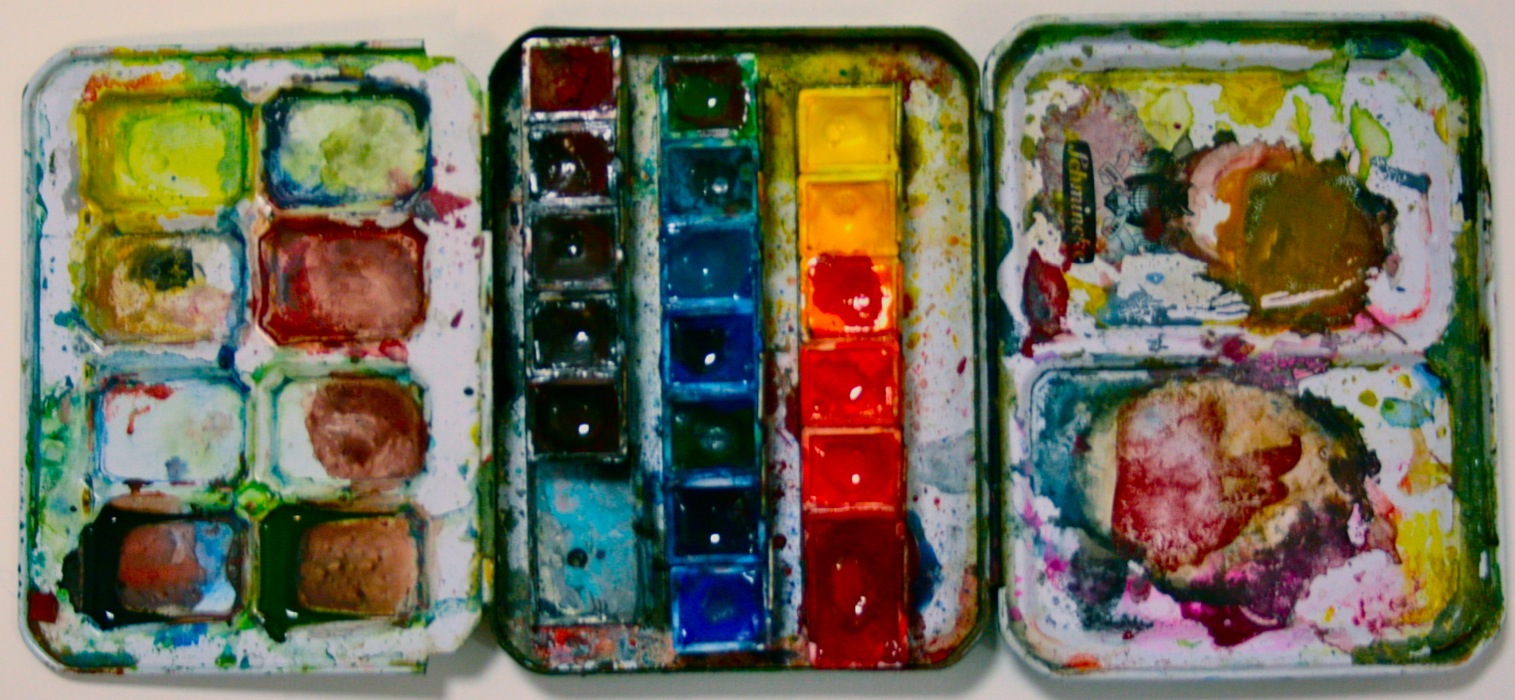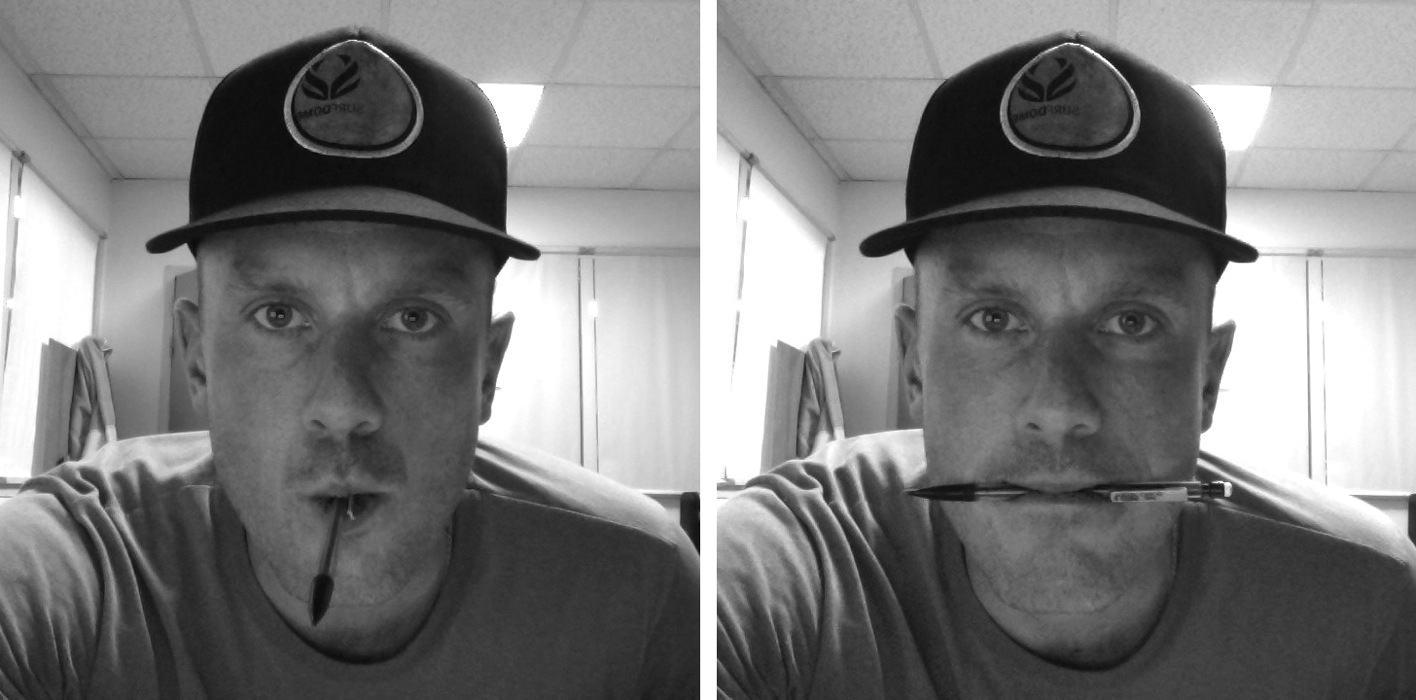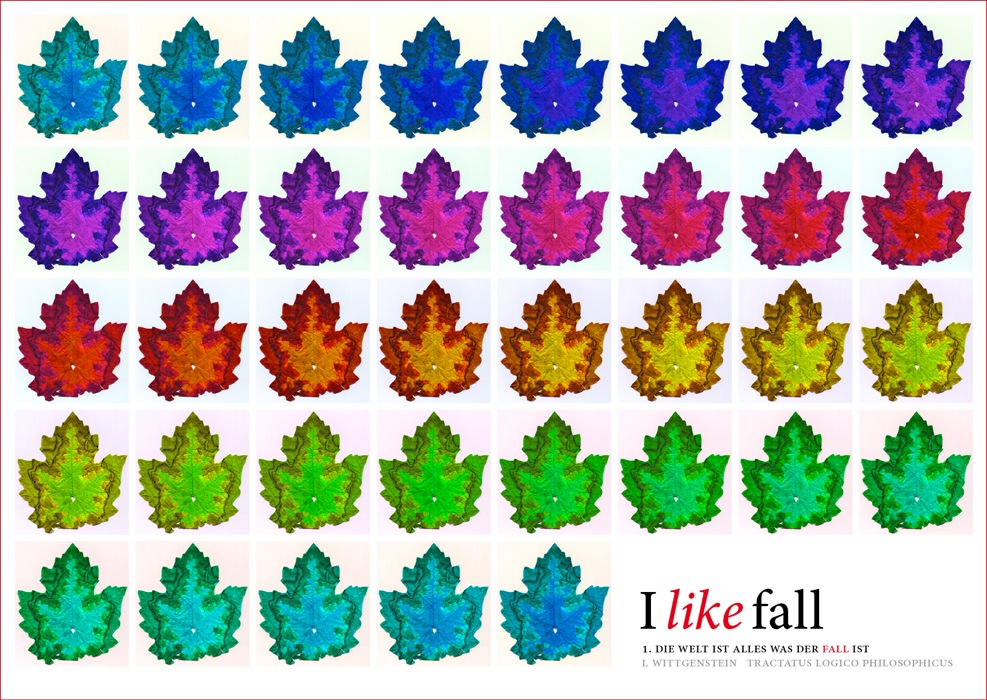Monthly Archives: October 2012
chaise africaine
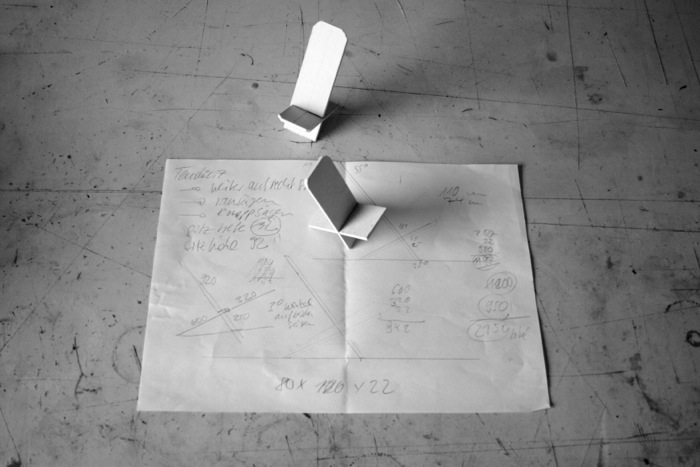
As of late I have been staying in my atelier a lot. In-between my work on various projects I like to relax, and do so by sifting throught magazines and by reading. In many ways my reading informs and stimulates my thinking and working and therefore this research is an integral part to my creative process. Up until now I did not have a suitable seating-accommodation to facilitate my reading-habbit.
I thought this to be a perfect opportunity to do some woodwork, something I had my mind set on for some time. I was in need of a lounging chair — a perfect design and craft study. I gave myself the constraints of limited time and literally no budget as much as my basic knowledge of woodworking techniques, something that I am hoping to improve with projects of that kind.
After considering and sketching out some ideas, I remembered having once sat on a so-called african chair. At the time I had been surprised by the apparent simplicity of the design, basically two boards crossed (there is different ways to do that), which makes the chair foldable. Most importantly, I had been surprised by the comfort this rudimentary construct provided. Therfore I set my mind on following that design and on building an african-type chair.
It did not take me long — to comprehend that the undertaking of my mission wasn’t all that easy. Instantly questions of ergonomics — the design characteristics of an object that is supposed to suit human properties — arose. All dimensions and angles had to be specified, that is if I wanted to plan out my project in advance and specified according to my body and its comfort-zones. This made up for quite some variables. I started taking measures of myself and quickly got frustrated with that. So I resorted to drafting some plans thereby relying on my intuition to find the angles that »looked right« on paper. This method I deemed interesting as I wondered wether I could trust my judgements based on two-dimensional appearance. After all we all have a lifetime of sitting experience and therefore of judging objects for their qualities in providing suitable rest for our derrière. Following that, I realized some scaled-down models from carton.
At some point I understood that there was only one way to definitely figure out the properties of that chair: by actually building it and sitting it out. My prototype-material was a board of plywood that was readily available. And so I got to work. I used the angles that I had previously drafted out, but gave me some room with all dimensions intending to saw it down to a comfortable seating position in the doing — a precaution that prove to be useful. This is how I ended up with the current protoype that I have been testing for a couple of days now. Needless to say that only the making of the prototype made me understand some of the specifics of this design that demand for a certain material dimensions as well. An important factor is the robustness of the material as much as its thickness as all of the forces act on the rather slim surface where the two boards cross.
I found a suitable (african) hardwood board, unfortunately it is too expensive, given my initial constraints, so I will try to find something else, once the sun comes out agin. — A whole lot of work and therefore practial research rests to be done on the actual fine-shaping of the form, taking into consideration once again comfort and aesthetics. I can’t wait to get my hands (and finally my buns) on that.
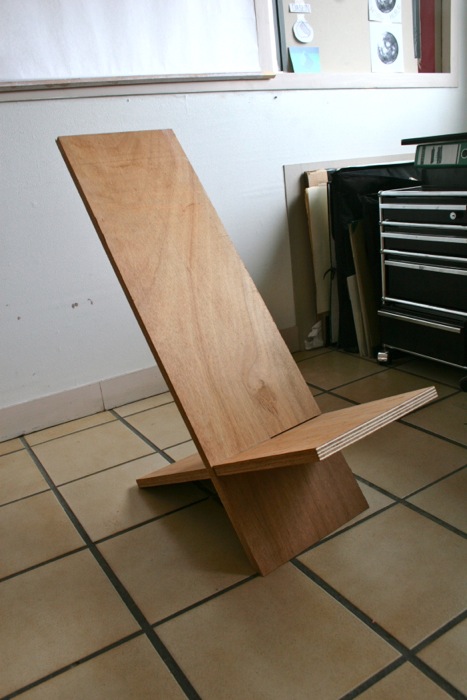
Funktionslust
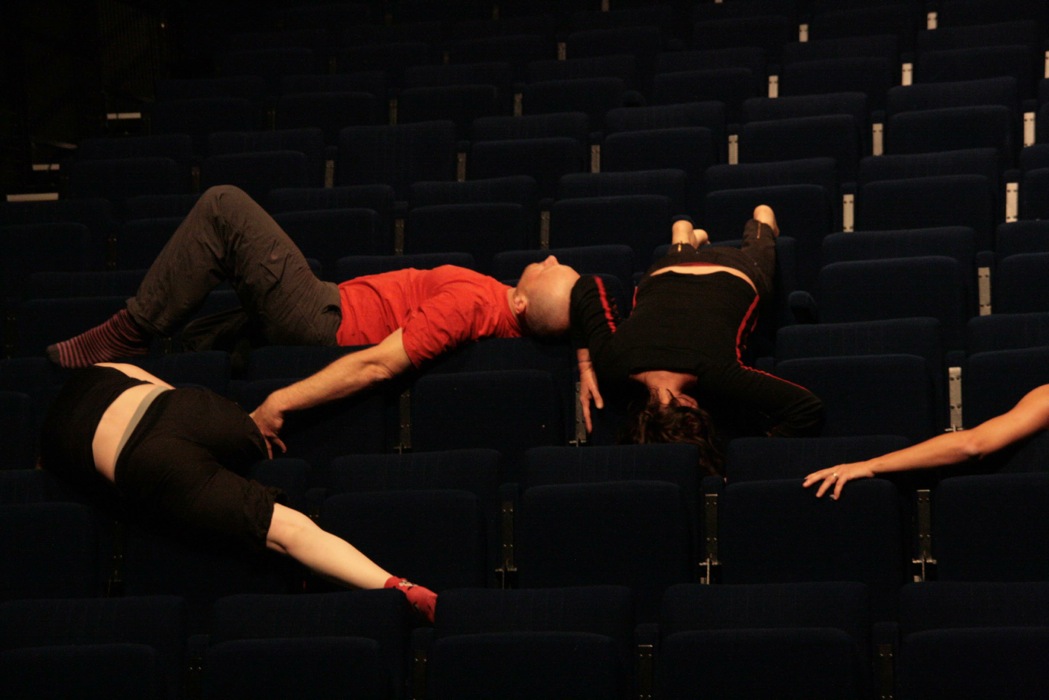
scene from Brainstroming a dancing performance by Herman Diephuis with participation of the author; image © Michel Mazon, 2011
Der Funktion, versteht man denn ihren lateinischen Ursprung: functio; für Tätigkeit und Verrichtung stehend, haftet ein allzu technischer Beigeschmack an. Dieser Beigeschmack liegt an der vielfältigen Verwendungen des Begriffes in Bezug auf Objekte und Systeme und seiner Bedeutung in der Mathematik und der Programmierung. Die Funktion ist aber eben auch ein zutiefst persönlicher und sozialer Terminus, so wie ganz eindeutig die Lust, als eine subjektiv angenehme Empfindung. Folglich kann diese Reflexion in eine semantische Synthese münden, mit dem damit einhergehenden Wohlbefinden ob der erlangten höheren Einsicht.
Die Funktionslust bezeichnet also ein Gefühl, das bei völligem Aufgehen in einer Tätigkeit auftritt und in ein umfassendes Engagement führt. Ein Schwebezustand des Gelingens resultierend aus der Balance zwischen Anforderung und Können. Ein ideales Dasein, das optimal zwischen Überfoderung (Angst) und Langeweile angesiedelt ist.
Der Begriff steht im Zusammenhang mit der sogenannten Flow-Theorie des Psychologen Mihály Csíkszentmihályi, der seine wissenschaftliche Arbeit hauptsächlich dem Phänom optimaler Resonanz persönlicher Interessen und Fähigkeiten in äusseren Umständen widmete. Die Funktionslust ist prinzipiell niemandem vorenthalten, und auch nicht auf eine bestimmte Tätigkeit beschränkt und somit eine zutiefst allgemein menschliche Erfahrung. Folgende Faktoren charakterisieren das Empfinden der Funktionslust entsprechend der Flow-Theorie: (1) intensive und fokussierte Konzentration im gegenwärtigen Augenblick (2) das Verschmelzen von Tätigkeit und Bewusstheit (3) den Verlust einer reflexiven Selbstwahrnehmung (4) das Beherrschen der aktuellen Situation oder Aktivität (5) eine Verzerrung des subjektiven Zeitempfindens (6) die Wahrnehmung des Tuns als an-sich befriedigend; hierfür wurde der Begriff der autotelischen Erfahrung eingeführt.*
Für den der sie kennt, ist die Funktionslust ein erheblicher Faktor im kreativem Gestalten des Daseins im Tun.
Die Empfindung der Harmonie des gelebten Selbst in der Welt ist ein guter Wegweiser für das Dasein — der Einzige vielleicht, folgen wir einem Leitsatz des Philosophen Jiddu Krishnamurti: truth is a pathless land.
* (Übersetzung des Autors, Quelle: Wikipedia: flow (psychology) quote: Nakamura, J., & Csikszentmihalyi, M. (2009). Flow theory and research. In C. R. Snyder & S. J. Lopez (Eds.), Handbook of positive psychology (pp. 195-206). Oxford: Oxford University Press.)
palette
Image
frown or smile
The two portrait-shots above are the visual outcome of an experiment that I felt compelled to carry out as mentioned in the book: Thinking Fast and Slow by Daniel Kahneman, my current reading. Basically, the two different ways of holding the pencil in my eating-apparatus physically forced me to eather »frown« or to »smile« thereby inducing respectively cognitive strain or ease in a self-reinforced reciprocity.
Our cognitive state, ranging between cognitive ease and cognitive strain depends on a multitude of incoming stimulus and has surprising effects on »the way we see things« and consequently our descisions and our actions.
The pleasure of cognitive ease makes you like what you see, believe what you hear and makes you trust your intuition. At the same time your thinking becomes relatively casual and superficial. Cognitive strain makes you likely to be vigilant and suspicious, feel less comfortable and makes you invest more effort in what you are doing. You are likely to make fewer errors yet it diminishes your creativity and intuition. (this paragraph quotes some of the text in the book)
I felt that my little experiment confirmed some of the above mentioned, that is to the extent that I could consciously feel the cognitive difference reflecting the given physical constraint. My conclusion is that I will smile more (than already;) to fully benefit from the pleasures of cognitive ease.
Home > Germans handpicked > The Arty > Jorinde Voigt

Die Wege des Herrn sind unergründlich. Bei einem meiner Streifzüge durch die unendlichen Weiten des Internet, stieß ich auf etwas was man im Französischen eine »bonne trouvaille« nennt, was sich sowohl mit »glücklichem Fund« als auch mit »originelle Idee« übersetzen lässt, und somit begrifflich eine großartige Synthese des Körper-Geist Dualismus darstellt. Wie im Titel bereits vorweggenommen, ist diese persönliche Enddeckung das Werkschaffen von Jorinde Voigt und der Ort der Enddeckung ist die online-Seite des Goethe Institut.
Das Persönliche an der Enddeckung ist zum Einen der Zeitpunkt in Anbetracht der Tatsache, dass Werk und Künstlerin bereits weitläufig bekannt sind, was wohl von einem eingeschränkten und selektiven Gesichtsfeld (m)einerseits zeugt. Zum Anderen und für mich bedeutsamer, ist der Gefallen, den ich an den Arbeiten finde, und deren Form, Gehalt und Genese, die für mich und meine Versuche richtungsweisend sein könnten.
Jorinde Voigt zeichnet, wobei ihr Zeichnen eine Form des Schreibens ist, und der Akt des Schreibens auch eine Geste darstellt. Sowohl der performative Charakter Ihrer Arbeiten, als auch deren Inhalt macht sie zu dynamischen Modellen des (Lebens-)Raum. Jorinde Voigt bezeichnet ihre Arbeiten auch als Notationen und stellt somit einen Bezug zu ihrem musikalischen Wesen, als auch eine gewisse Referenz zu den Arbeiten und der gleichnamigen Publikation von John Cage her. Grundelemente ihrer Notationen sind Linien, dynamisch geschwungen und oft wiederholt ausgeführt, die den Arbeiten durch ihren Flux Lebendigkeit einhauchen. Die Verwendung von Farbe erzeugt Kraftfelder und dient der Kodierung. Wörter sind visuelle Zeichen und semantische Orte. Ihre Arbeitsmethode beschreibt die Künstlerin als Algorithmus. Nach allgemeiner Definition ist dieser Prozess eine endliche Folge von eindeutigen Operationen oder Anweisungen, welche zur Lösung eines Problems führen. Vor dem technisch und wissenschaftlich anmutenden Anklang ihrer Arbeitsbeschreibung, steht meines Erachtens klar der intuitive und irrationale Arbeitsansatz des Künstlers, der sich einer wilden Melange simultaner Einflüsse verschreibt. Äusseren und inneren Impulsen nachgebend folgt das Tun von Jorinde Voigt dem Beuys’schen Auto-Imperativ: »Wenn sich keiner meldet, zeichne ich nicht.«
Jorinde Voigt, geb. 1977 lebt und arbeitet in Berlin. Ihre Arbeiten und weitere Information findet man zuvorderst auf Ihrer online Representation.
und hier bitteschön weitere Referenzen zu dem obigen Artikel:
der Artikel von Rory MacLean für das Goethe Institut
und ein Artikel in dem Magazin Roven: Revue critique sur le dessin contemporain, nr7, 2012
